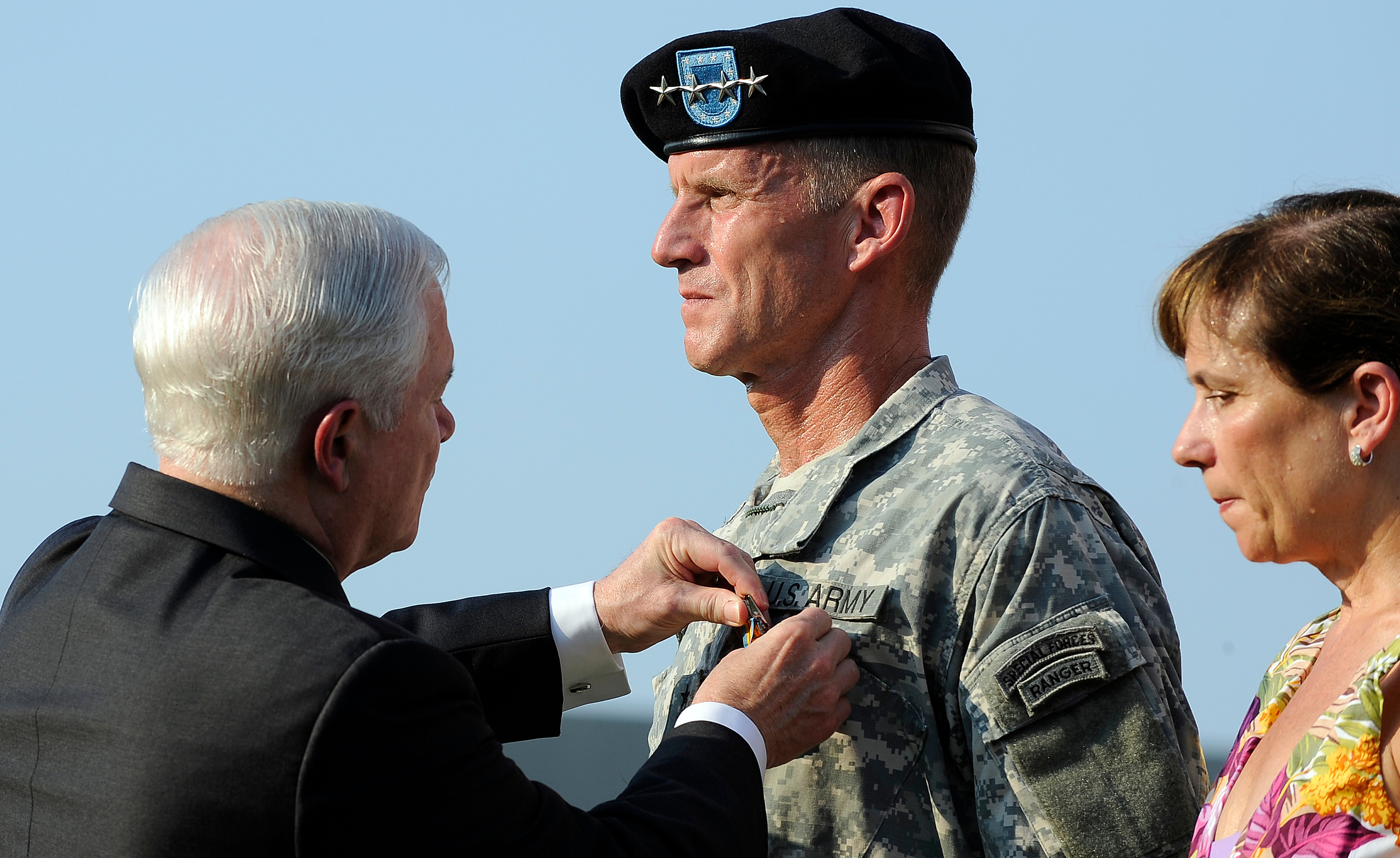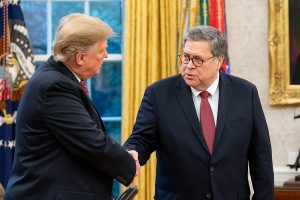by William D. Hartung
There are two reigning narratives about Gen. Stanley McChrystal, the former head of the U.S. Special Operations Command and U.S. forces in Afghanistan. One is the story of a loose-lipped, cocky military man who had to step down for making derisive comments about his commander-in-chief to a reporter from Rolling Stone. The other is the tale of a soldier’s soldier, a commanding figure without an ounce of fat on him who leads by example and whom former Secretary of Defense Robert Gates describes as “perhaps the finest warrior and leader of men in combat I have ever met.”
Upon closer examination, neither of these descriptions rings true. The real story—as told in his new book Team of Teams: New Rules of Engagement for a Complex World—is far more interesting. Co-authored with Tantum Collins, David Silverman, and Chris Fussell, the book describes McChrystal’s role in transforming the Joint Special Operations Task Force in Iraq (the “Task Force”) from a traditional, top-down, bureaucratic organization into a nimble rapid reaction force. This new organizational structure proved to be far more effective at killing or capturing members of al-Qaeda in Iraq (AQI), the forerunner of the Islamic State (ISIS or IS), than any prior approach had been.
McChrystal and his co-authors suggest that the lessons they learned in Iraq are universally applicable, not just to armies but to schools, governments, and corporations. In order to assess this claim, it is necessary to look more closely at McChrystal’s approach.
The Four Pillars of McChrystal
McChrystal’s Task Force was built upon four pillars: trust, common purpose, “shared consciousness,” and “empowered execution.” The first two pillars depend on the kind of individuals selected and how they are trained. The third and fourth pillars require more explanation.
Shared consciousness has to do with attempting to ensure that everyone from soldiers in the field to intelligence operators and military officers are working from the same base of information. McChrystal tried to accomplish this by creating an open-space, multi-service, and multi-agency Joint Operations Center where all relevant actors could access everything from video of ongoing raids and outcomes of successful captures to maps of territorial gains or losses. The theory behind this approach was that in dealing with a networked, rapidly moving adversary like al-Qaeda, traditional “command and control” approaches to disseminating information were just too slow to allow the forces on the ground to act in time to “remove the threat from the battlefield.”
The most striking example of McChrystal’s approach was the daily “Operations and Intelligence brief,” or O and I, a videoconference that eventually grew to include a cast of thousands from all over the world, not only from U.S. government agencies but also from partner governments as well. McChrystal describes these meetings as “the heart and muscle of what we sought to create and the pulse by which it would live or die.” McChrystal was willing to share information on this scale because he thought it was more important to have key actors on the same page than it was to worry about traditional need-to-know, compartmentalized approaches to disseminating critical data. He even goes so far as to say that the relatively free sharing of information among intelligence agencies since 9/11 “has saved many lives and done more good than the damage from incidents like the Manning and Snowden leaks has done harm.“
The final pillar of McChrystal’s approach—“empowered execution”—is a fancy way of saying that whenever possible, the decision on whether to launch a raid should be made by the commander closest to the action rather than undertaking the time-consuming process of running it up and down a lengthy chain of command.
Effective But Counterproductive
By all accounts, McChrystal’s management methods yielded impressive results in killing or capturing AQI operatives. The Task Force increased its average number of monthly raids from 18 per month to 300 per month under the new approach. As Dana Priest and Bill Arkin point out in their book Top Secret America, the Joint Special Operations Command of which McChrystal’s Task Force was a part “has killed and captured more al-Qaeda members around the world and destroyed more of their training camps and safe houses that the rest of the U.S. government forces combined.” McChrystal helped create one of the most effective killing machines in the history of the U.S. military.
But herein lies the problem. As the Afghan war drags on and AQI has morphed into IS, it has become clear that killing terrorist leaders and their foot soldiers has had little effect on the strength and resilience of terrorist organizations. As Andrew Cockburn notes in Kill Chain, his book on the checkered history of targeted assassinations in U.S. military strategy, a study based on the U.S. military’s own internal data found that killing terrorist leaders in Iraq actually resulted in increases in attacks on U.S. forces by next generation leaders who were even more vicious and aggressive than their predecessors. And this doesn’t even take into account the political backlash generated by the civilian casualties that inevitably result from “hunter-killer” tactics, no matter how careful U.S. attackers may be.
A longer-term view raises even more questions about the value of McChrystal’s approach. The emergence of IS from the ashes of AQI decisively reversed any gains that the Task Force may have made by upping the tempo of killing and capturing terrorist operatives. McChrystal has little to say about this, other than that there is no “permanent fix” for dealing with a problem like al-Qaeda and that constant vigilance is necessary to secure prior gains.
The ultimate problem with McChrystal’s approach is that it is more tactical than strategic. Nowhere in the book does McChrystal question whether it made sense to invade Iraq in the first place, given the trillions of dollars and hundreds of thousands of lives that were lost in order to clear the way for a sectarian regime that has severely undermined the prospects for building a stable, democratic nation.
McChrystal seems to miss the point that an unquestioning, “can-do” attitude in service of an ill-advised mission can do more harm than good. McChrystal’s book offers some useful insights on how to make decisions on the fly in a rapidly changing environment, but it has little to offer on the larger question of what objectives are ultimately worth pursuing.
William D. Hartung is the director of the Arms and Security Project at the Center for International Policy and a senior adviser to the Security Assistance Monitor.





